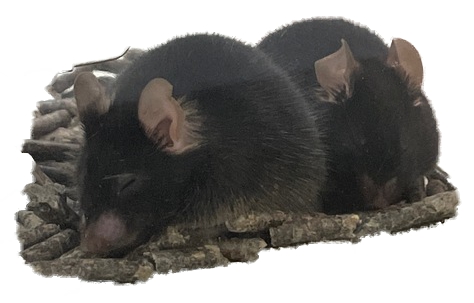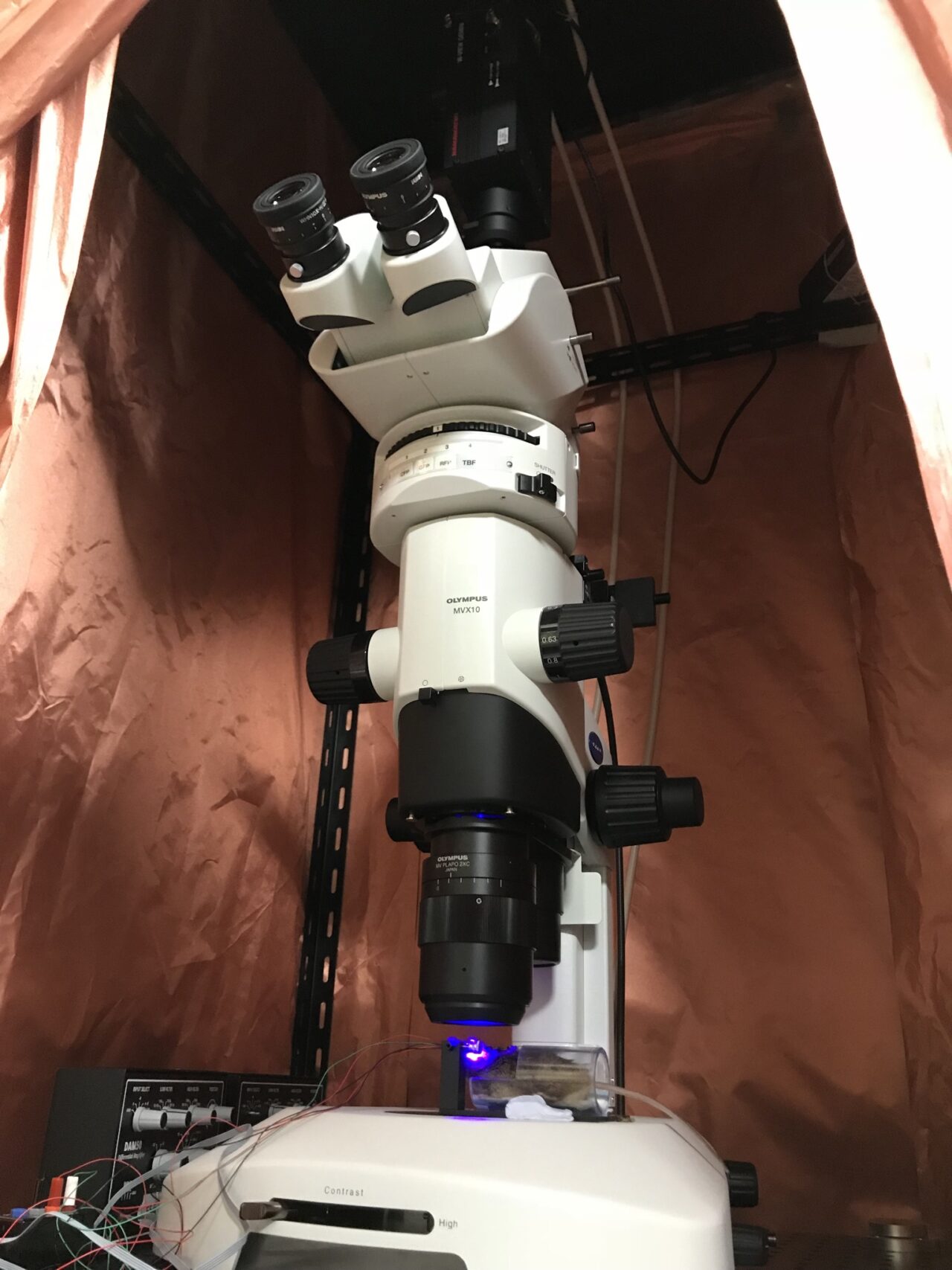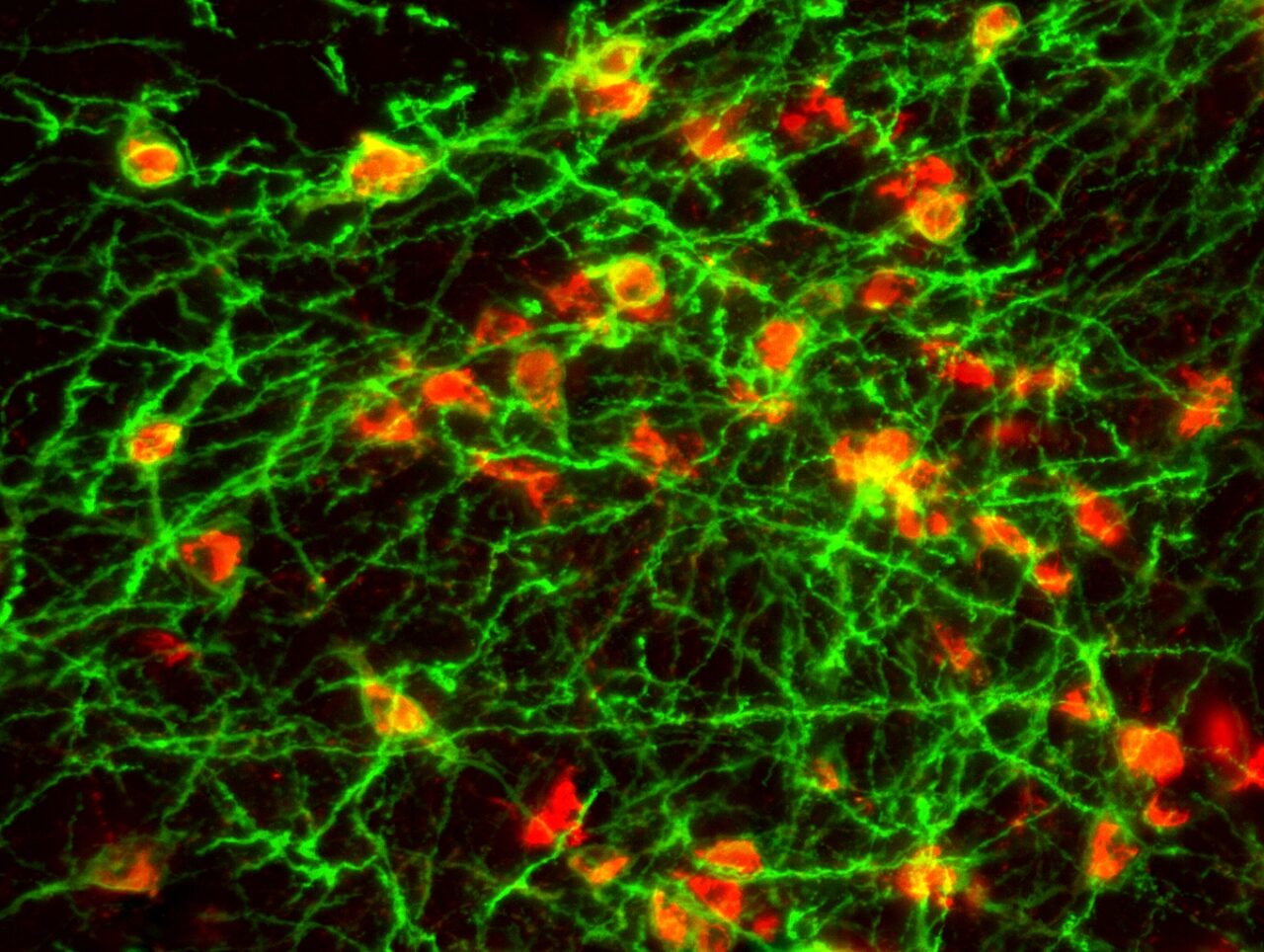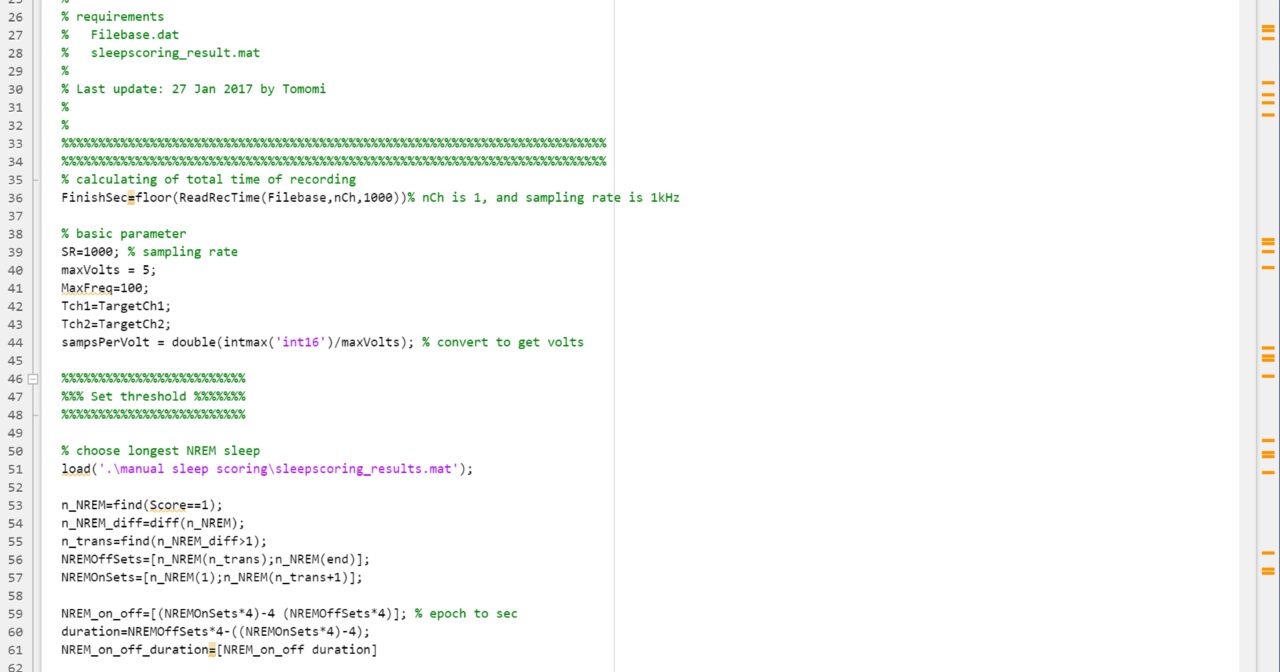TSUNEMATSU, TomomiAssociate Professor
If we sleep eight hours a day, we spend as much as one-third of our lives sleeping. Why do we sleep? Why do we dream? Why do we have rapid eye movement (REM) and non-REM sleep? We are still unable to correctly answer such fundamental questions. In our laboratory, we perform research to answer these questions using genetically engineered mice (Photo 1). We aim to clarify the neural mechanisms and physiological functions of dreams, in particular. To this end, we are conducting research using various techniques, including large-scale extracellular recording (Photo 2), which can record a large number of neural activities at once; optical imaging (Photo 3), which records dynamics in intracellular ion concentrations; optogenetics (Photo 4), which controls neural activities through light illumination; and programming (Photo 5) to analyze the data.
Photo 1 Sleeping mice
Photo 2 COMS digital multi-electrode probe. On the needle-like tip, more than 1000 recording electrodes are mounted.
Photo 3 Macro-zoom microscope for optical imaging
Photo 4 Light-driven proteins (green) expressed in specific type of neurons (red)
Photo 5 Source code of programming
References
What are the neural mechanisms and physiological functions of dreams?
Tsunematsu T* Neurosci Res. 2023, 189, 54-59. DOI: 10.1016/j.neures.2022.12.017
Region-specific and state-dependent astrocyte Ca2+ dynamics during the sleep-wake cycle in mice. Tsunematsu T*, Sakata S, Sanagi T, Tanaka KF, Matsui K J Neurosci. 2021, 41(25): 5440-5452. DOI: 10.1523/JNEUROSCI.2912-20.2021
State-dependent brainstem ensemble dynamics and their interactions with hippocampus across sleep states. Tsunematsu T, Patel AP, Onken A, Sakata S eLife 2020, 9: e52244 DOI: 10.7554/eLife.52244
Optogenetic manipulation of activity and temporally-controlled cell-specific ablation reveal a role for MCH neurons in sleep/wake regulation. Tsunematsu T, Ueno T, Tabuchi S, Inutsuka A, Tanaka KF, Hasuwa H, Kilduff TS, Terao A, Yamanaka A J Neurosci. 2014, 34(20): 6896-6909. DOI: 10.1523/JNEUROSCI.5344-13.2014
Acute optogenetic silencing of orexin/hypocretin neurons induces slow-wave sleep in mice.
Tsunematsu T, Kilduff TS, Boyden ES, Takahashi S, Tominaga M, Yamanaka A J Neurosci. 2011, 31(29): 10529-10539. DOI: 10.1523/JNEUROSCI.0784-11.2011
Faculty
Faculty of Science
Department of Biological Sciences
Behavioral Neurobiology
Grad School
Graduate School of Life Science
Division of Life Science
Biosystems Science Course
Contact Information
Faculty of Science, Building #5 5-911
Email: tsune ![[atmark]](https://www2.sci.hokudai.ac.jp/dept/bio/wp/wp-content/themes/sci-bio_2407/img/atmark.png) sci.hokudai.ac.jp
sci.hokudai.ac.jp
